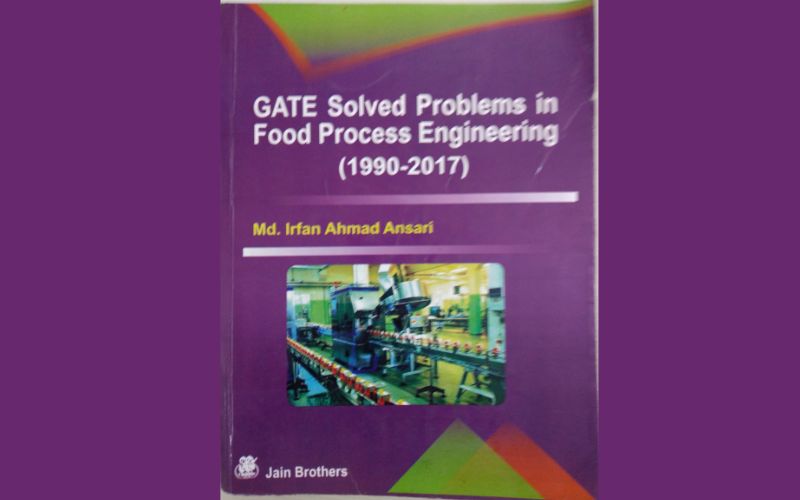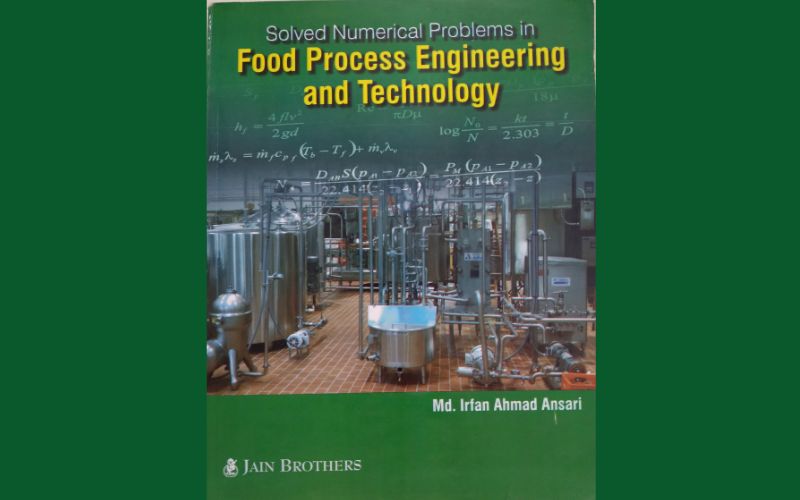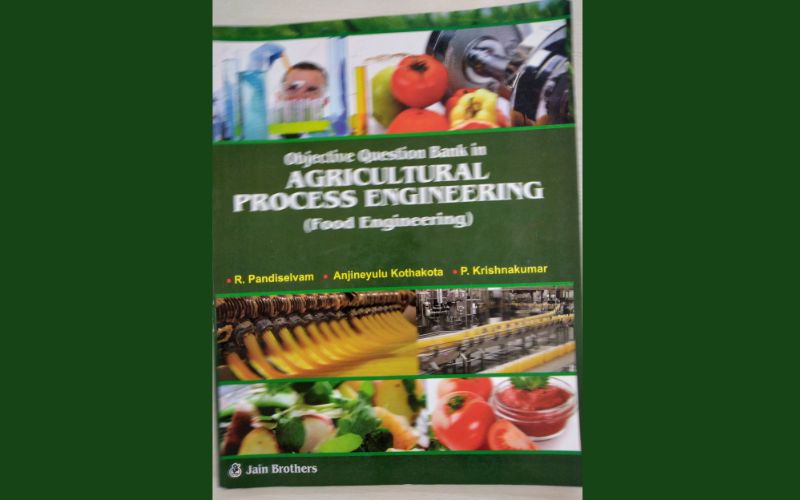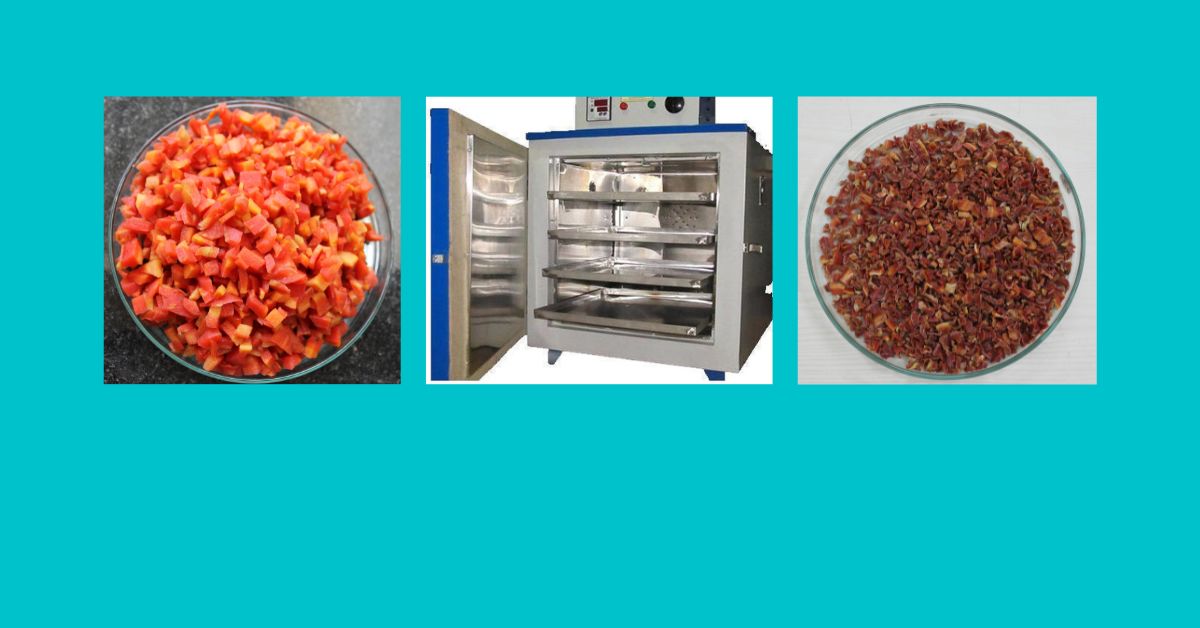Agricultural Processing and Food Engineering Book
Following books are useful for Agricultural Processing and Food Engineering students.
1. Question Bank on Agriculture and Food Engineering

This book has a set of objective type questions from various subjects of Agricultural Engineering and is useful for many competitive examinations. Though many chapters covers Farm machinery and power, irrigation and drainage engineering, Soil and water conservation engineering, some chapters are also written on Agricultural Processing, Dairy and Food Engineering subjects. This book contains following chapters.
- Agricultural Processing
- Dairy and Food Engineering
- Agricultural structures and environmental control
- Farm machinery
- Farm power
- Irrigation and drainage engineering
- Soil and water conservation engineering
- Miscellaneous topics
- Match the following type questions
- Important mathematical equations
2. Processing and Food Engineering–Objective Questions and answers
Agricultural Processing and Food Engineering Book

This book has many chapters on Agriculture Processing and Food Engineering subjects.
- Introduction
- Material and energy balances
- Fluid flow
- Heat and mass transfer
- Thermal processing
- Refrigeration
- Food freezing
- Evaporation
- Psychrometrics
- Drying/Dehydration
- Separation
- Size reduction
- Storage
- Mixing
- Material handling
- Engineering properties
- Farm structures and environmental control
- Renewable energy sources
- Food industry management
- Miscellaneous questions
At the end of book, match the following types questions from various topics of Agricultural processing and food engineering are provided.
Available on Amazon – check latest price:
3. Objective Type Questions Bank On Food Process Engineering And Technology

This book has 11 sections and 432 pages. Various topics of Food process engineering and technology have been covered in this book in the form of objective type questions. Following chapters are covered.
- Units and Dimensions
- Thermal and Physical Properties of Foods
- Rheological Properties of Foods
- Heat Transfer
- Mass Transfer
- Size Reduction and Mixing
- Physical Separation Processes
- Psychrometrics
- Dehydration and Evaporation
- Thermal Processing of Foods
- Baking Roasting and Frying
- Non-Thermal Processing of Foods
- Low Temperature Processing of Foods
- Post Harvest Management of Cereals Pulses and Oilseeds
- Fruits and Vegetables Processing
- Dairy Processing
- Food Packaging
- Steam and Boilers
- Food Chemistry and Microbiology
- Food Process Measurement and Quality Control
- Information Technology
Available on Amazon – check latest price:
Agricultural Processing and Food Engineering Book
4. Concepts of Food Process Engineering

Though ‘Concepts of Food Process Engineering’ book is written in MCQ style, Authors have tried to use MCQs as a tool to develop the understanding of students about the subject. This book comprised of total 10 sections.
- Properties of Biological Materials
- Basics of Food Science and Nutrition
- Processing and Storage of Food Grains
- Processing and Storage of Fruits and Vegetables
- Food Processing Principles and Equipment
- Processing of Milk and Milk Products
- Food Packaging
- Food Plant Layout and Design of Equipments
- Food Laws and Regulations
- Basic Mathematics and Statistics
Available on Amazon – check latest price:
5. Agricultural Processing and Food Engineering (A Basic Approach)

Agricultural Processing and Food Engineering Book
The book ‘Agricultural processing and Food Engineering (A Basic Approach)’ has total 10 sections covering engineering properties of agricultural produce and different unit operations in food processing.
Content of the book:
- Engineering properties of agricultural produce
- Mechanical Separation
- Size Reduction
- Mixing
- Heat Treatment
- Thermal Processing
- Drying and Dehydration
- Milling
- Storage
- Packaging
6. Guide to Post Harvest Unit Operations

This book is divided in 15 chapters covering all unit operations in post harvest sector. Additionally questions from previous question papers of GATE, ARS, NET etc. are given with detailed answers which is helpful for students to prepare for such examination.
Content:
- Engineering Properties of Biomaterials
- Mechanical Separators
- Size Reduction
- Milling
- Evaporation and Distillation
- Principle of Heat Transfer
- Application of Heat Transfer
- Sterilization and Pasteurization
- Refrigeration and Chilling
- Equilibrium Moisture Content and Water Activity
- Drying and Dehydration
- Storage
- Packaging
- Material Handling and Transportation
- Agricultural By Product Utilization
Available on Amazon – check latest price:
7. Theoretical Concepts and Formulas in Food Process Engineering
Agricultural Processing and Food Engineering Book

This book has several theoretical concepts and formulas in food process engineering subject.
Content
- General Mathematical Formulae
- Basic Physical Quantities
- Engineering Properties of foods
- Momentum Transfer
- Heat transfer
- Mass Transfer
- Cleaning, size reduction and mixing
- Thermal processing of foods
- Refrigeration and Freezing
- Psychrometrics
- Drying
- Evaporation
- Physical Separation Processes
- Food packaging , handling and storage
Available on Amazon – check latest price:
8. GATE Solved Problems in Food Process Engineering

This book contains solved problems from various sections of Agricultural processing and food engineering subject.
- Engineering Properties of Food Materials
- Momentum Transfer
- Thermodynamics
- Conduction, Convection and Radiation Heat Transfer
- Heat Exchangers
- Mass Transfer
- Physical Separation Processes
- Size Reduction and Mixing
- Refrigeration and Freezing of Foods
- Thermal Processing of Foods
- Psychrometrics
- Dehydration
- Evaporation
- Food Packaging, Handling and Storage
- Miscellaneous Multiple Choice Questions
Available on Amazon – check latest price:
Agricultural Processing and Food Engineering Book
9. Solved numerical problems in food process engineering and technology

This book illustrates solved problems in food process engineering and technology. Content of this book is given below,
- Engineering Properties of Food Materials
- Mass and Energy Balances
- Momentum Transfer
- Conduction, Convection and Radiation Heat Transfer
- Heat Exchangers
- Mass Transfer
- Physical Separation Processes
- Size Reduction and Mixing
- Thermal Processing of Foods
- Refrigeration and Freezing
- Psychrometrics
- Dehydration
- Evaporation
- Food Packaging, Handling and Storage
At the end Multiple choice question and answer table is also provided in this book.
Available on Amazon – check latest price:
10. Objective Question Bank in Agricultural Process Engineering (Food Engineering)
This book has set of many questions which are important for any competitive examination.

Content:
- Engineering Properties and Quality of Biomaterials
- Heat and Mass Transfer
- Post Harvest Unit Operations
- Process Technology and Machinery
- Design of Processing Machinery
- Material Handling, Packaging and Transport
- Storage Engineering
- Process Plant Design
- Instrumentation and Process Control
- Agri-Project Planning and Management
Questions from ARS main examination 2013,2014 and 2016 was also covered.
Agricultural Processing and Food Engineering Book
11. Objective Type Question Bank in FOOD PROCESS ENGINEERING
This book has many objective type questions from food process engineering subject.
Available on Amazon – check latest price:
12. Post Harvest Process and Food Engineering By Dr. Vijay Kumar Singh
This book has covered many topics such as Cleaning & Grading, Drying & Dehydration, Milling, Storage, Material Handling & Transportation, Dairy & Food Engineering, Farm Structures & Building, Engineering Properties of Agricultural Produce, Food Processing Plant Design & Layout, Renewable & Bio-Energy, Protected Cultivation, Units & Measurements etc.
Available on Amazon – check latest price:
Affiliate Disclosure: “As an Amazon Associate, I earn from qualifying purchases — at no extra cost to you.”




